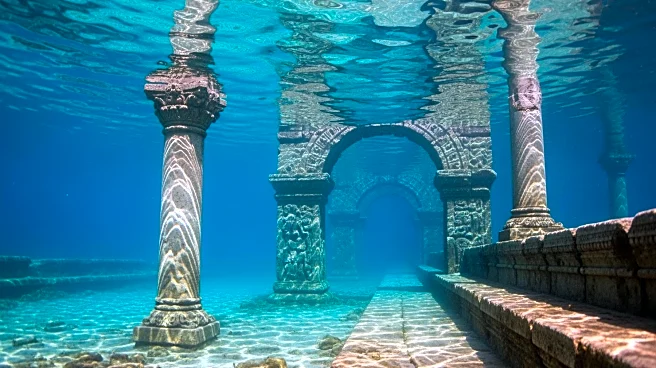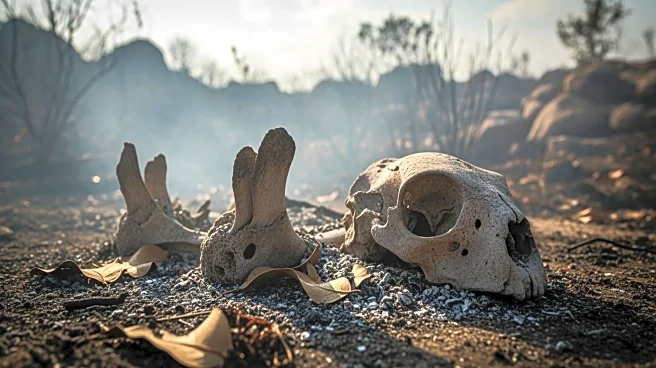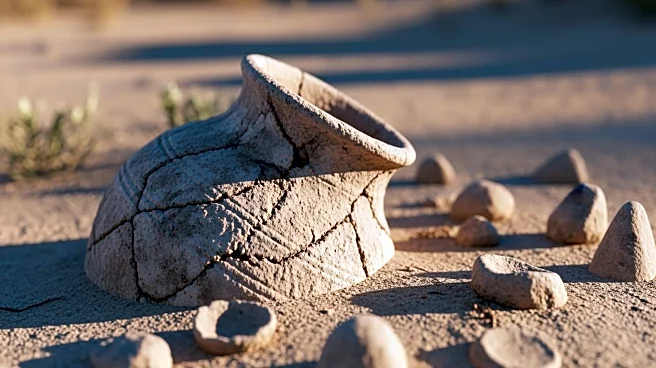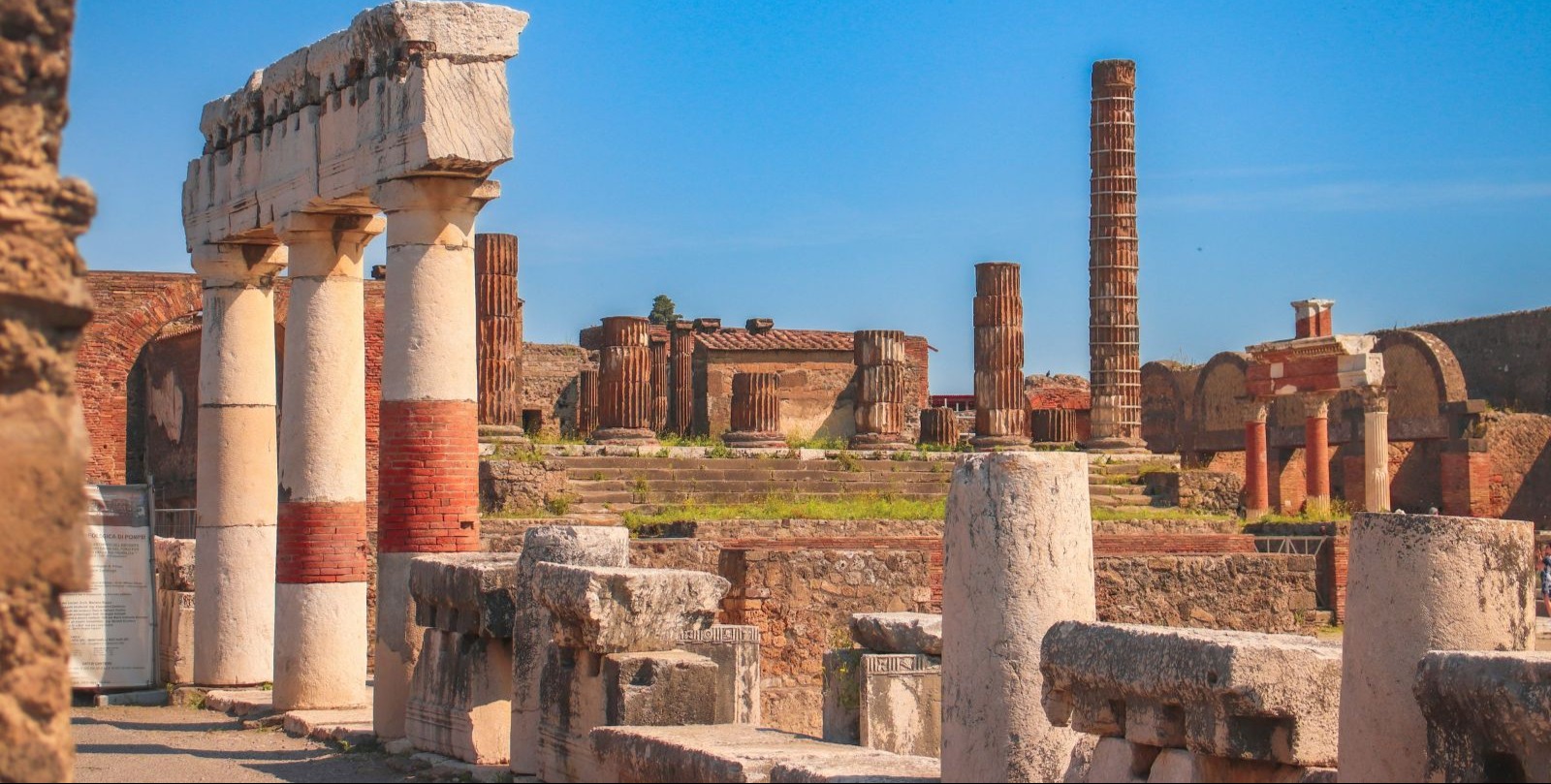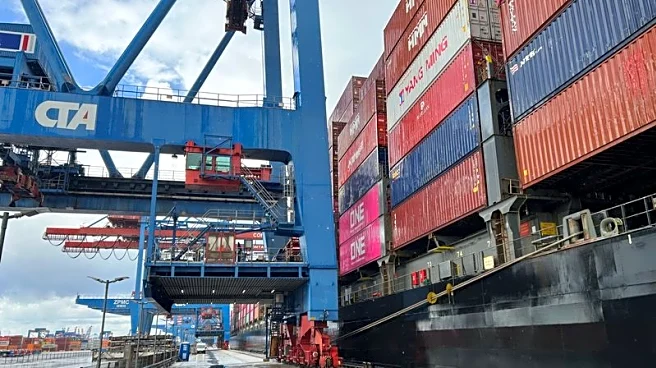What's Happening?
Explorers from the Russian Academy of Sciences have uncovered traces of a submerged city beneath Lake Issyk Kul in Kyrgyzstan. The discovery includes remains of a medieval burial ground, large ceramic
vessels, and parts of a building made of baked bricks. The city is believed to have housed Muslim prayer houses, schools, bathhouses, and possibly a grain-milling operation. Expedition leader Valery Kolchenko described the site as an important commercial settlement that was lost to a tragedy comparable to the Pompeii disaster. The ruins lie underwater due to the lake's dramatic rise since ancient times.
Why It's Important?
The discovery of the submerged city at Lake Issyk Kul offers significant insights into medieval trade routes and settlements along the Silk Road. It highlights the historical importance of the region as a commercial hub that facilitated the exchange of goods and ideas between Europe and Asia. The findings could reshape understanding of the cultural and economic interactions in Central Asia during the medieval period. The research also underscores the impact of natural disasters on historical civilizations, providing a cautionary tale about the vulnerability of human settlements to environmental changes.
What's Next?
Further analysis and dating of the samples collected from the site are underway to determine the precise age and historical context of the settlement. Researchers are expected to continue excavations to uncover more details about the city's infrastructure and its role in the Silk Road trade network. The findings may prompt additional archaeological investigations in the region, potentially revealing more submerged sites and contributing to a broader understanding of Central Asian history.
Beyond the Headlines
The discovery raises questions about the preservation of cultural heritage sites that are vulnerable to natural disasters. It also highlights the importance of interdisciplinary research combining archaeology, geology, and history to reconstruct past civilizations. The submerged city could become a focal point for discussions on sustainable tourism and conservation efforts in Kyrgyzstan, balancing the need to protect historical sites with the potential for economic development.


